Brisbane man in isolation and undergoing tests as deadly virus from China goes global
Scott Morrison has announced a travel warning after a Brisbane man became the first Australian to display symptoms of a deadly SARS-like virus.
The Prime Minister has just announced a travel warning after a man was isolated after returning from a family holiday.
The Brisbane man had returned from a Chinese province with a respiratory illness.
In response, Scott Morrison said on Twitter that the goverment will be raising the level of our travel advice for Wuhan City in China to level 2 — which means travellers should “exercise a high degree of caution”.
This afternoon I was briefed by the Chief Medical Officer Prof Brendan Murphy on the coronavirus detected in China’s Wuhan area. The CMO has advised that while the current risk level is low, precautions are being taken to protect Australians.
— Scott Morrison (@ScottMorrisonMP) January 21, 2020
Queensland Chief Health Officer Jeannette Young said the Brisbane man is recovering at home but will undergo further tests for the new coronavirus, which has already proved deadly overseas.
A Queensland Health spokesman said the man has recently returned from Central China with a respiratory illness.
“Because the man travelled to Wuhan, Coronavirus is one of the conditions he is being tested for,” he said. “The man will remain in isolation until his symptoms have resolved.
“We urge anyone who has developed any respiratory symptoms within 14 days of travel to Wuhan to see their GP immediately.”
The state’s health department hopes to have the test results within a few days, the Courier-Mail reports.
The number of cases of “2019-nCoV”, which causes a type of pneumonia, has surpassed 220 across the globe and authorities are concerned it could spread quickly.
Chief Health Officer Brendan Murphy told reporters this morning the risk to Australia was low but said three direct flights from Wuhan to Sydney will be met by border security, biosecurity and NSW Health staff from Thursday in response to the “rapidly emerging situation”.
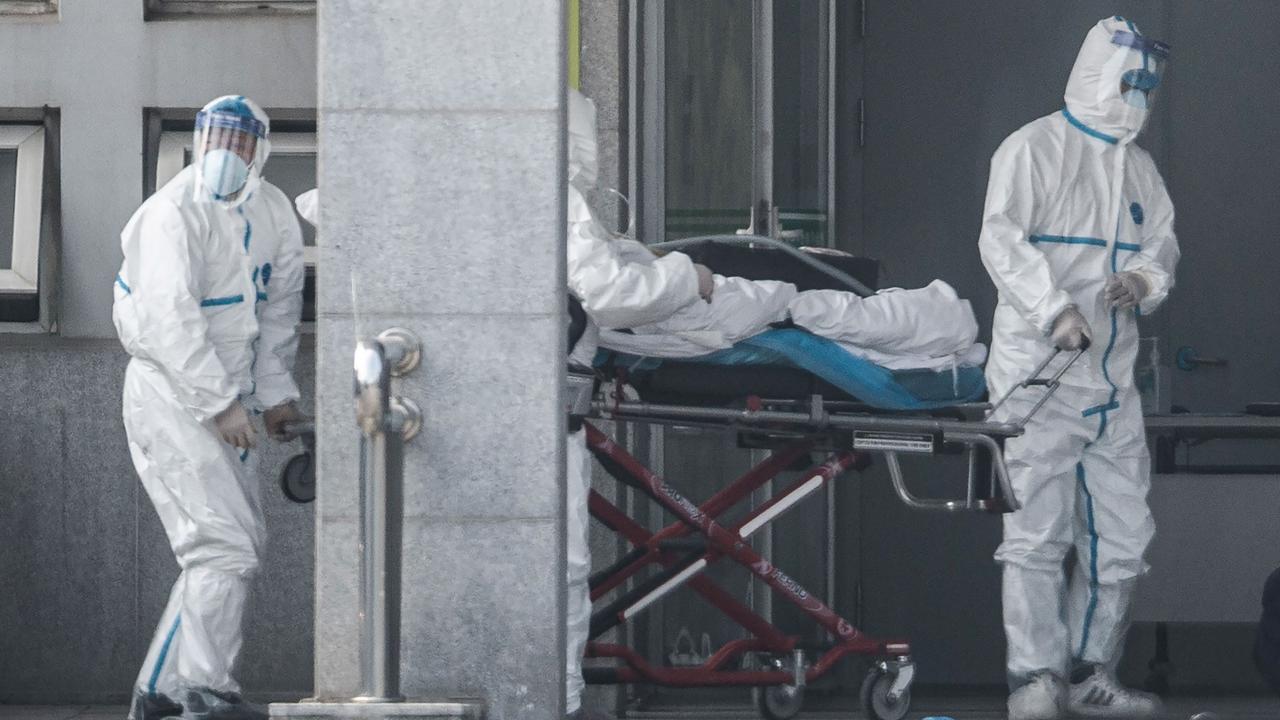
International airports are screening passengers for the mysterious SARS-like disease that has been confirmed as passing from human-to-human and has also jumped China’s borders.
A video has been shared widely on Twitter showing people on a domestic flight out of the central Chinese city of Wuhan having their temperature taken one-by-one by people in protective suits.
The vision was also posted by state-funded Beijing News on Weibo where it has been viewed more than 3.4 million times. The Chinese newspaper said it was provided by a “Ms Cheng” who took a flight from Wuhan to Macau on January 12.
A man who works for the Macao Health Bureau confirmed to the Associated Press that such checks are taking place in the southern Chinese region.
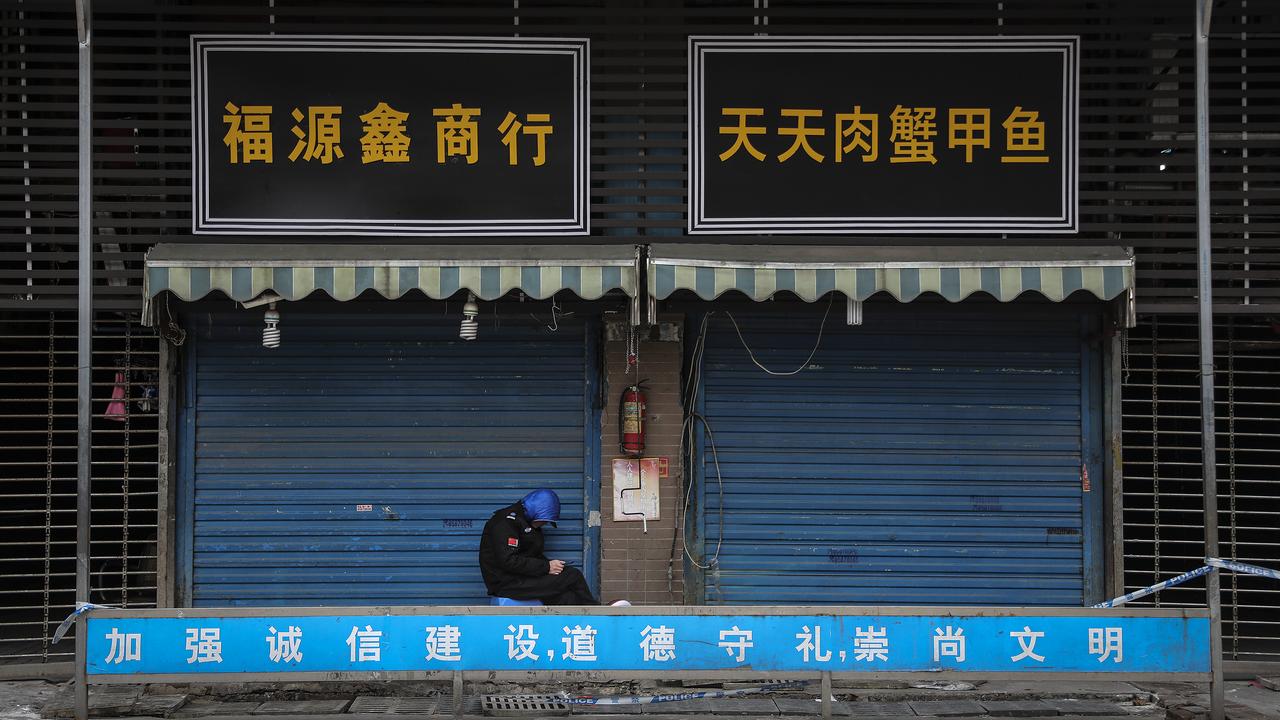
Many of the initial cases of the coronavirus were linked to a seafood market in Wuhan, which was closed as authorities investigated.
The virus has spread around China while other international cases, all involving recent travel, have been confirmed in Thailand, South Korea and Japan.
It has caused alarm because of its connection to Severe Acute Respiratory Syndrome (SARS), which killed nearly 650 people across mainland China and Hong Kong in 2002-2003.
Coronaviruses cause diseases ranging from the common cold to more severe ones such as SARS. The Chinese government initially tried to conceal the severity of that epidemic but its cover-up was exposed by a high-ranking physician.
Initial symptoms of the novel coronavirus include fever, cough, tightness of the chest and shortness of breath, and those seriously ill developed pneumonia.
At least half a dozen Asian countries and three US airports have started screening incoming airline passengers from central China.
Chinese President Xi Jinping said it was “extremely crucial” to take every possible measure to combat the disease that has infected at least 217 people in the country.
His remarks, cited by state broadcaster CCTV on Monday, came the same day that the country reported a sharp rise in the number of people infected by the novel form of viral pneumonia, including the first cases in the capital Beijing.
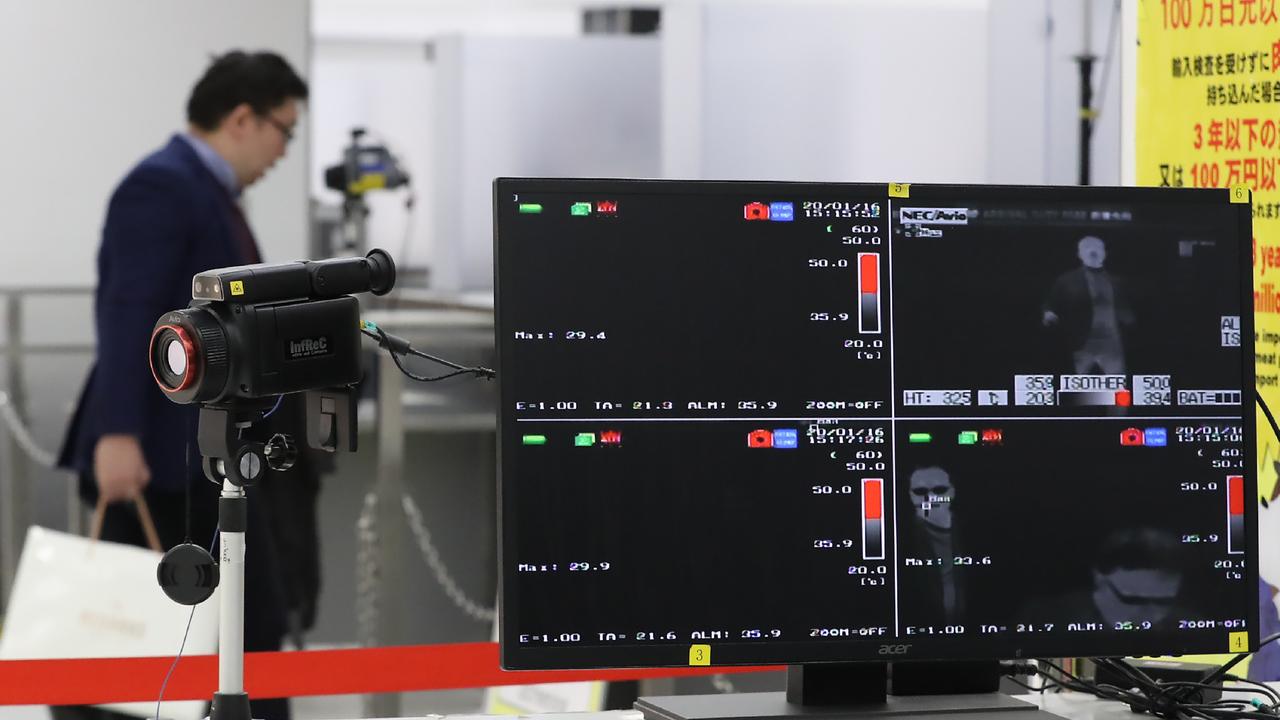
The World Health Organisation (WHO) in Geneva will convene an “emergency committee” meeting on Wednesday to determine whether the outbreak constitutes a public health emergency of international concern, and what recommendations should be made to manage it.
Researchers had assumed that the disease jumped from animals to humans, but a recent rise in cases pointed to person-to-person transmission as well.
An animal source seems the most likely primary source of this novel #coronavirus (2019-nCoV) outbreak, with some limited human-to-human transmission occurring between close contacts. pic.twitter.com/L57VUr5d3z
— World Health Organization (WHO) (@WHO) January 19, 2020
The head of a Chinese government expert team yesterday said human-to-human transmission has been confirmed.
Team leader and respiratory expert Zhong Nanshan said two people in Guangdong province in southern China caught the virus from family members.
He said a number of medical workers had also caught it while treating patients.
The outbreak comes as the country enters its busiest travel period, when millions board trains and planes for the Lunar New Year (January 25) holidays.
“The recent outbreak of novel coronavirus pneumonia in Wuhan and other places must be taken seriously,” President Xi said, according to CCTV.
“Party committees, governments and relevant departments at all levels should put people’s lives and health first.”
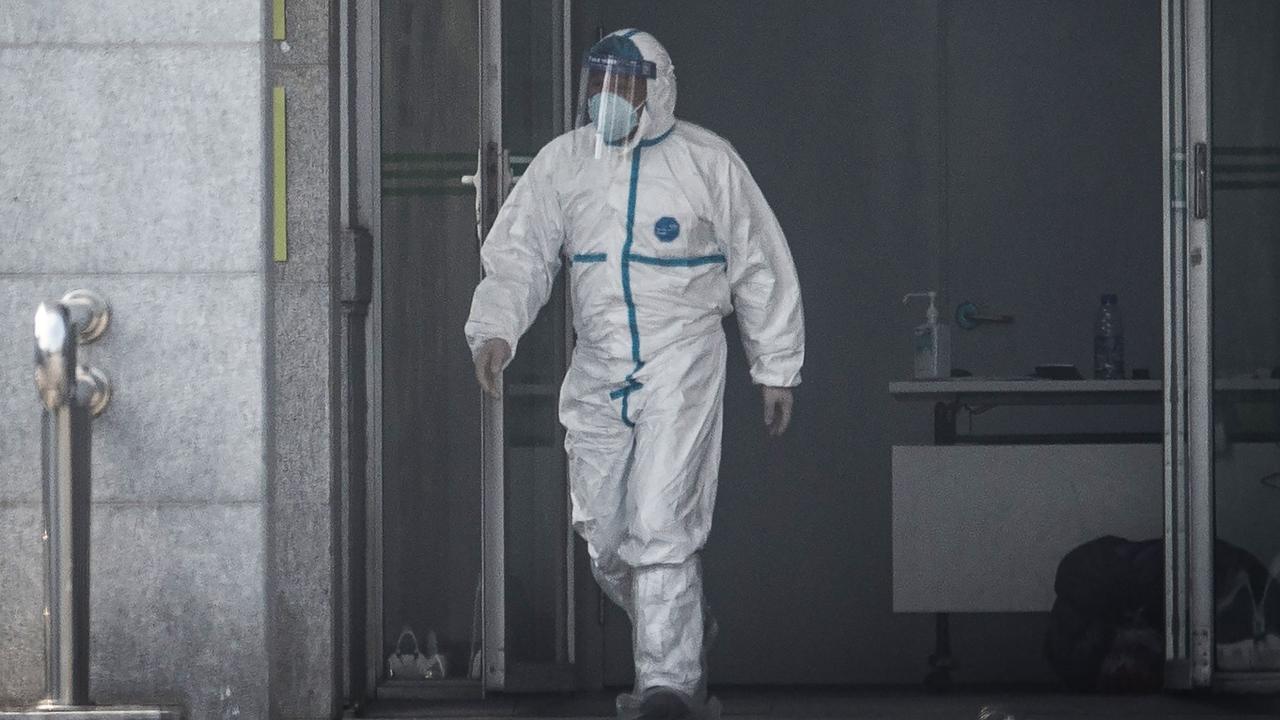
WHAT IS BEING DONE IN AUSTRALIA?
Chief Medical Officer Brendan Murphy on Tuesday morning said “additional appropriate border measures” are being put in place to respond to the “significant development” over the weekend that the virus can be spread between humans.
He said there was currently no need for alarm in Australia.
Passengers on three direct flights from Wuhan to Sydney each week will be handed information pamphlets in English and Mandarin outlining the symptoms and asking them to identify themselves at the border if they have a fever or suspect they may have the virus.
The government is doing some “careful modelling” to determine if other flights from China have a high number of Wuhan-origin passengers and may consider expanding their approach.
“There are apparently 160 flights from China a week and obviously flights from China could come via other ports as well, so it’s a very complicated process,” Prof Murphy said on Tuesday morning.
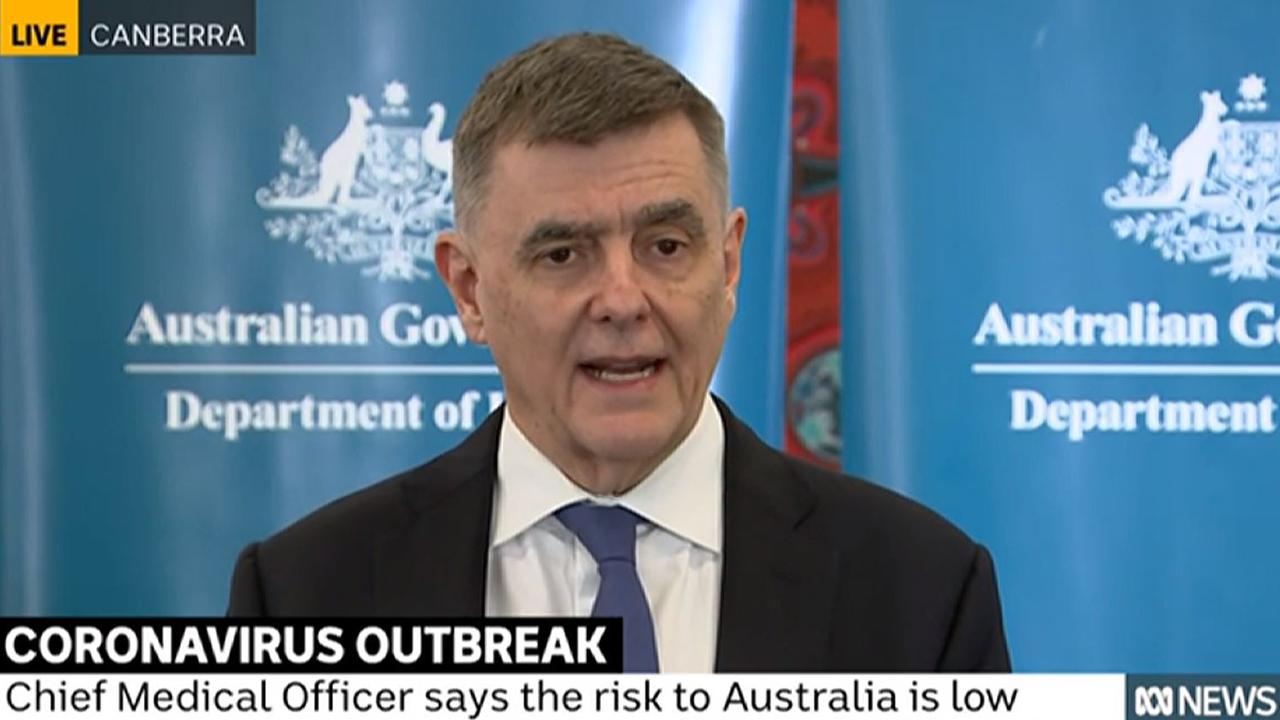
He said information will be put in place at all other ports of entry and specific communications will be made with Chinese media to target the Chinese-speaking population.
The chief medical officer said past evidence – “certainly our evidence in the flu pandemic” – suggests scanning passenger temperatures at the border is ineffective.
“It missed a large number of cases … it leads to a false sense of security, it’s not an effective public health mechanism,” he said.
“We had a meeting of all of our senior public health experts yesterday and we don’t believe that is an appropriate measure and it’s helpful.”
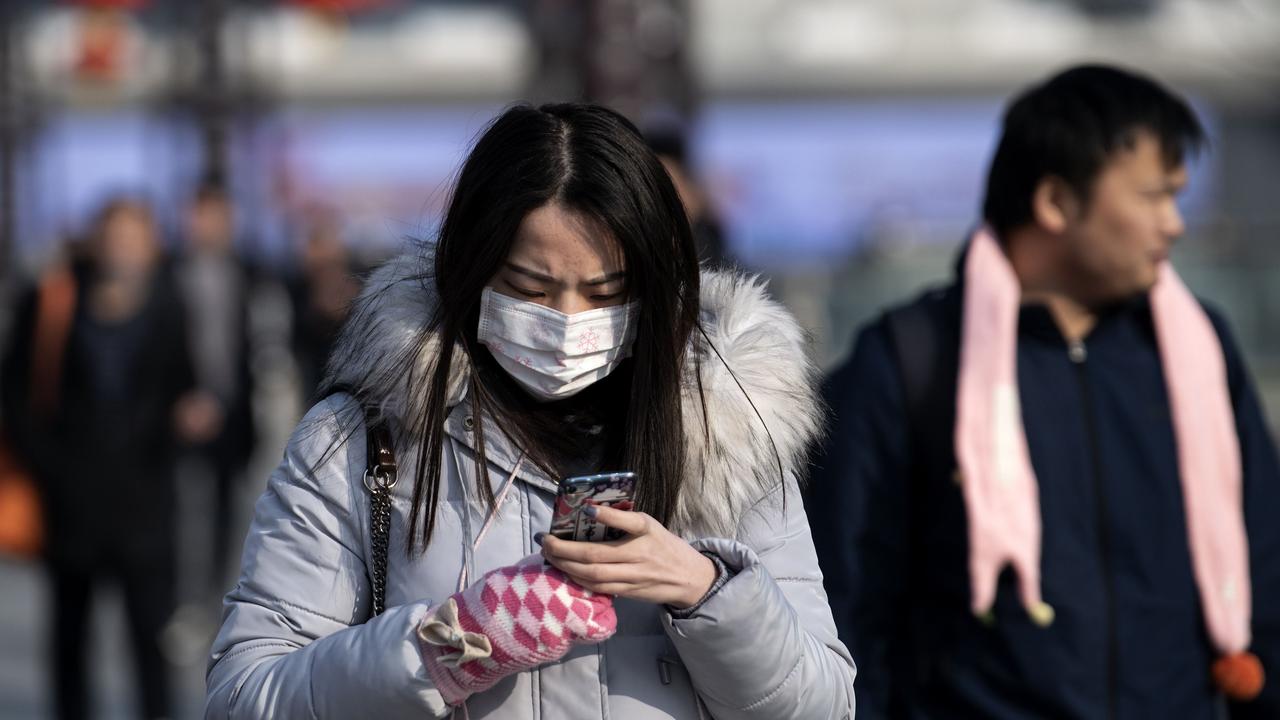
Australia has a large number of international travellers from Wuhan and across China.
“We’re a very well prepared country to deal with a new and emerging infectious disease,” Prof Murphy said.
But he said it was important to remember border screening “cannot absolutely prevent the spread of the disease into the country” as the incubation period is probably a week.
“It’s about identifying those with a high risk and making sure those who have a high risk know about it and know how to get medical attention,” Prof Murphy said.
“There’s no way of preventing this getting into the country if this becomes bigger. We need to respond to it as we always do.”
He said the health department is working with the Department of Foreign Affairs and Trade to consider updating travel advice.
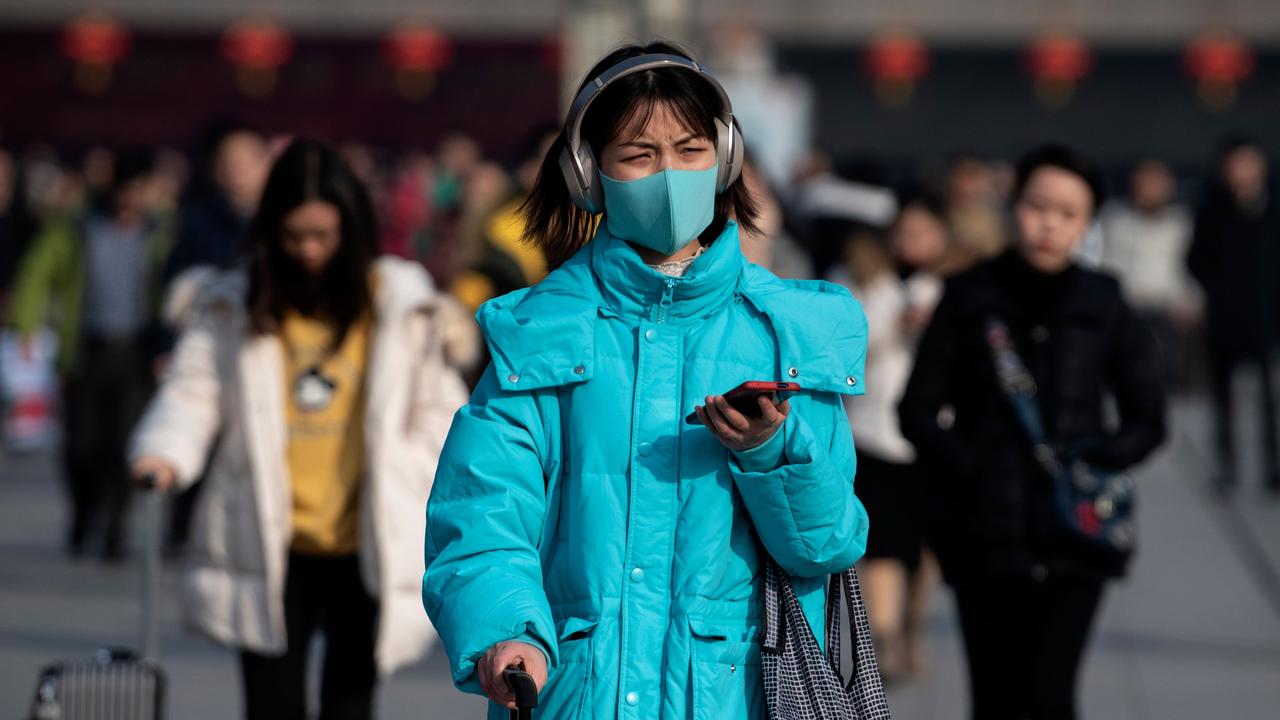
TIMELINE OF NEW CORONAVIRUS SPREAD
• Alarm raised
The World Health Organisation (WHO) is alerted on December 31, 2019, by the Chinese authorities of a string of pneumonia-like cases in Wuhan, a city of 11 million people.
Patients are quarantined and work begins on identifying the origin of the pneumonia.
The US Centers for Disease Control and Prevention (CDC) identifies a seafood market suspected to be at the centre of the outbreak. It is closed on January 1, 2020.
• New coronavirus
On January 9, the WHO says that the outbreak in Wuhan was caused by a previously unknown type of coronavirus, which is a broad family ranging from the common cold to more serious illnesses like SARS.
To date 59 people have been infected of whom seven are in a serious condition, according to an official toll.
• First death
The Chinese health authorities say a first person has died of the virus on January 11. They revise downwards the number of sick people to 41.
• Spreads beyond China
On January 13, the virus spreads beyond China’s borders for the first time with a case emerging in Thailand, according to the WHO. The victim is a Chinese woman diagnosed with mild pneumonia who was returning from a trip to Wuhan.
On January 15, China’s health commission says no human-to-human transmission of the virus behind the Wuhan outbreak has been confirmed so far, but the possibility “cannot be excluded”.
The next day a first case of the virus is confirmed in Japan in someone who had stayed in Wuhan in early January.
• US controls
On January 17, a second person, a 69-year-old man, dies in Wuhan, according to the authorities.
The same day, the CDC announces that it will begin screening passengers arriving from Wuhan at three airports: San Francisco, New York’s JFK and Los Angeles.
• Human to human transmission confirmed
On January 20, a third death and more than 100 new cases are announced in China, sparking concerns ahead of the annual Lunar New Year holiday which begins January 25 and sees hundreds of millions of Chinese people travel nationwide.
The virus is present in Beijing in the north, Shanghai in the east and Shenzhen in the south. More than 200 cases have been recorded. The virus is also detected in South Korea in a Chinese person who has arrived by plane from Wuhan.
China’s President Xi Jinping says that the virus must be “resolutely contained”, in his first public comments on the outbreak.
Human-to-human transmission is “affirmative”, a top Chinese expert on infectious diseases Zhong Nanshan tells state broadcaster CCTV.
– with wires



